The northeast has been hit with a series of bizarre weather patterns in the past few months: a highly unusual drought in spring followed by intense storms and flooding for weeks in July. While the switch to El Nino is partially culpable, the never-before-seen extreme weather events are attributed to our warming climate. The recent storms in Vermont were a 1,000-year storm event… yet municipal stormwater systems might only be designed for a 25–year flood. We need to face the music and realize that we are currently in the extreme climate weather that was promised to us by global climate scientists. We need to keep working to reduce emissions, yet we also need to realize that our current systems for storm mitigation are likely undersized for this climate era.
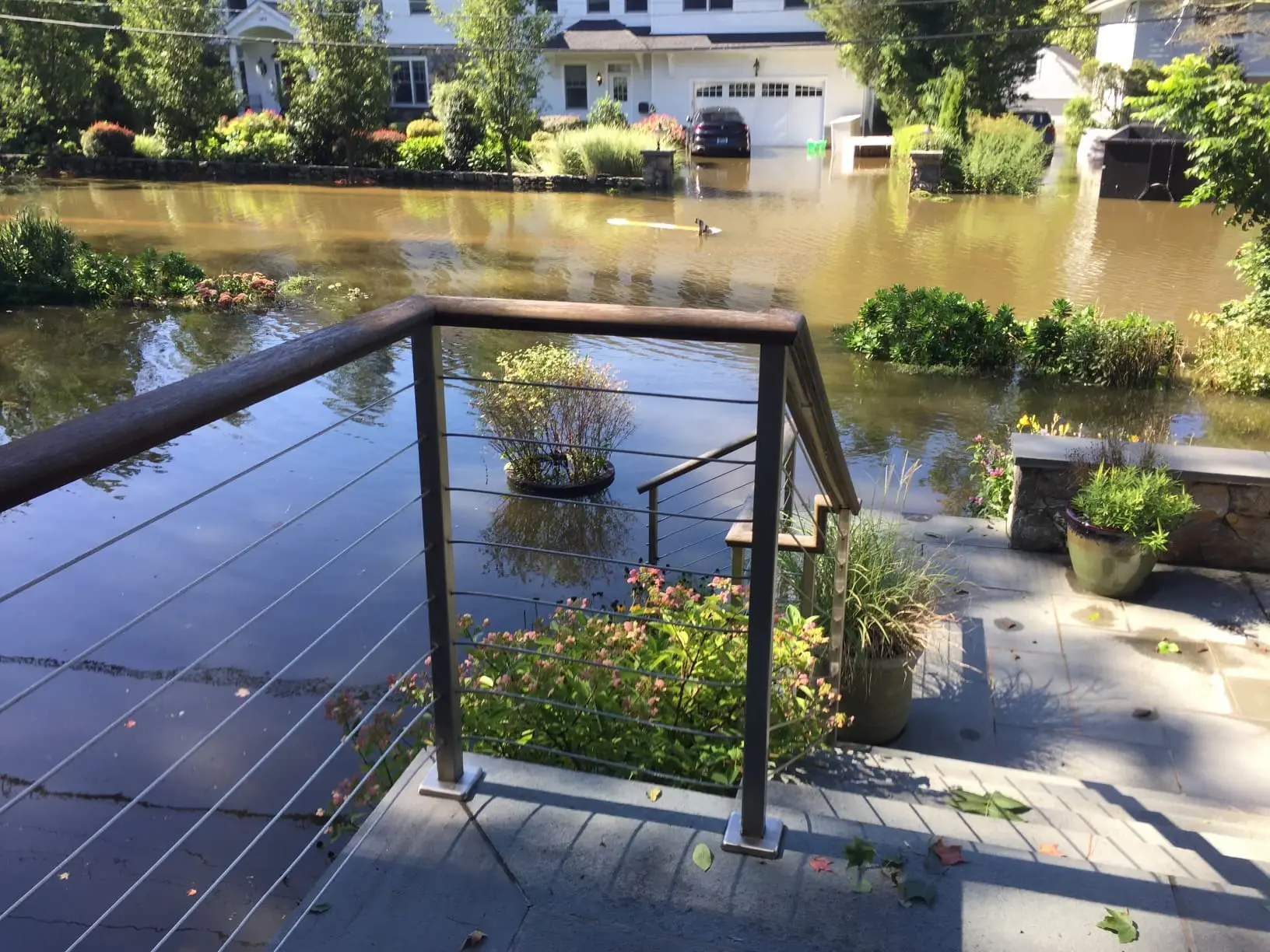

Land Stewardship in the Era of Climate Change
Our first pledge as landscape designers and stewards in the 21st century is to practice astute observations in the landscapes we oversee. This spring’s unusual drought happened at a time of critical plant growth – when leaves are just starting to push out and root systems and trying to expand. This growth phase, if stunted by lack of resources (water), can affect plant growth and vivacity.
If plants die or are stunted in spring, there is a ripple effect down-season, as they are less equipped to provide their essential ecosystem services: absorbing stormwater and releasing it back to the hydrologic cycle; turning CO2 into oxygen; filtering air pollutants; providing food for wildlife. If we do not astutely observe the changing conditions in our landscapes, we cannot respond to pressing problems. Landscape management must become nuanced, agile, and inventive in the era of climate change.
Analyzing, Planning, Designing for the 1,000-Year Flood
We, as landscape design professionals, also need to shift how we analyze site conditions. Every landscape should be evaluated for stormwater direction, absorption, and recycling capabilities. Step outside your plants-only mindset and look first at the gutters and leaders: is the quantity and size sufficient for the size of the building or home? Do the leaders bleed out into the landscape or driveway, or are they directed to landscape features for absorption? Does the neighbor’s stormwater system bleed over property lines and effect your clients’ landscape?
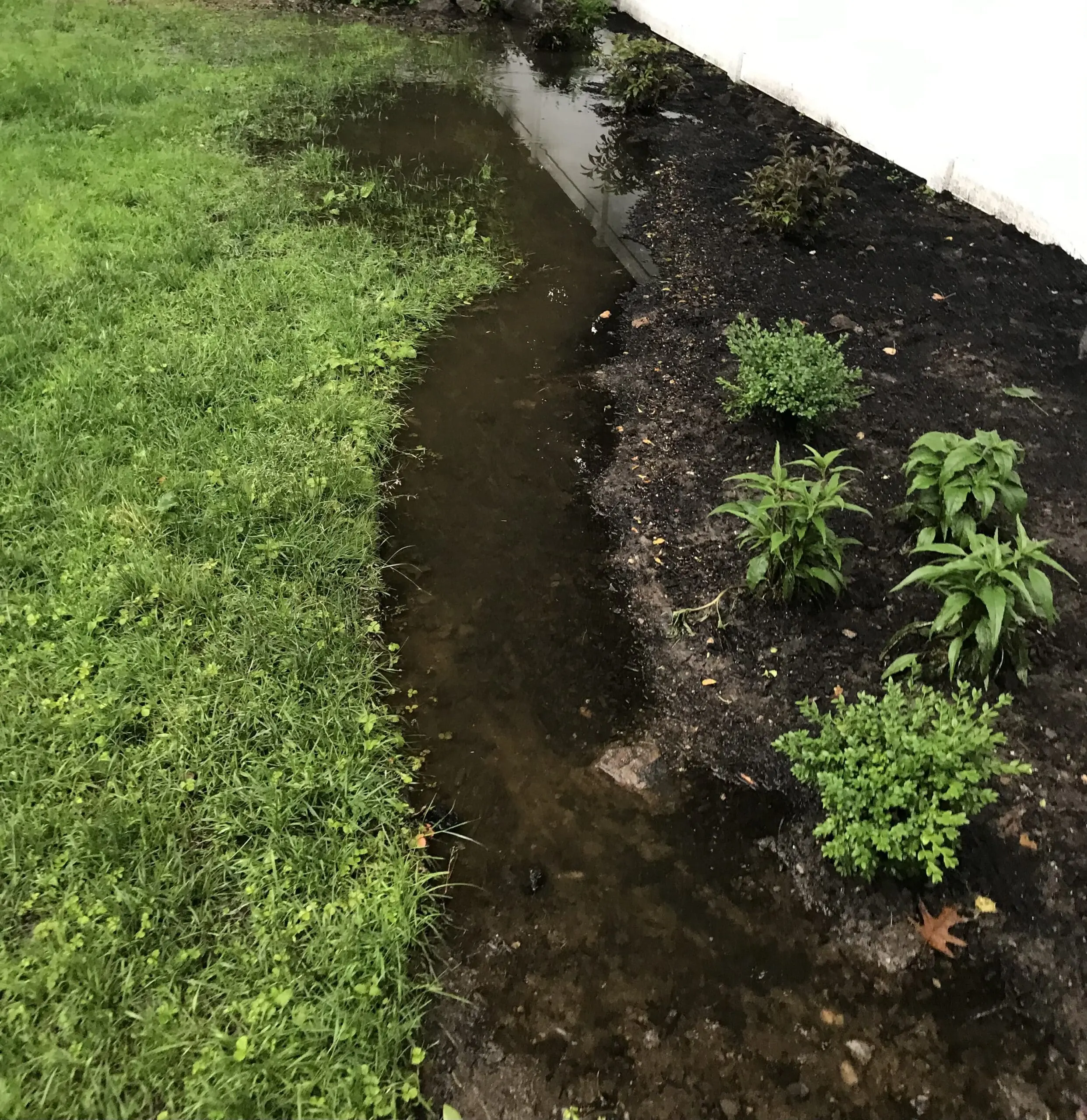
Managing water in the landscape takes system infrastructure – a mix of above ground and below ground solutions that direct stormwater to the most effective zones of the landscape for absorption or storage. Aside from just directing stormwater, we must also consider the topography through which the water is moving. Is it susceptible to erosion because of its slope angel or lack of vegetation? Can we utilize landscape elements to help slow down the flow of stormwater as well as direct it? In the era of 1,000-year storms, we need to utilize all the bioengineering and landscape construction techniques available to craft resilient landscapes.
Bioengineering and Landscape Construction to Combat Extreme Storms
Of course, every landscape design and construction plan will be tailored to the site conditions, material availability, and client budget, but educating your client on the importance of stormwater infrastructure to the longevity of their landscape is a critical step. Below are some of the bioengineering and landscape drainage systems we often deploy in projects.
Below Ground Strategies:
- Solid & Perforated Pipes for Passive Irrigation: the first ten feet of piping from the building outwards must be solid, to protect the building’s foundation. After that, we generally switch to perforated pipes surrounded by gravel and filter fabric to allow stormwater to both be transported and lightly release in the landscape as passive irrigation.
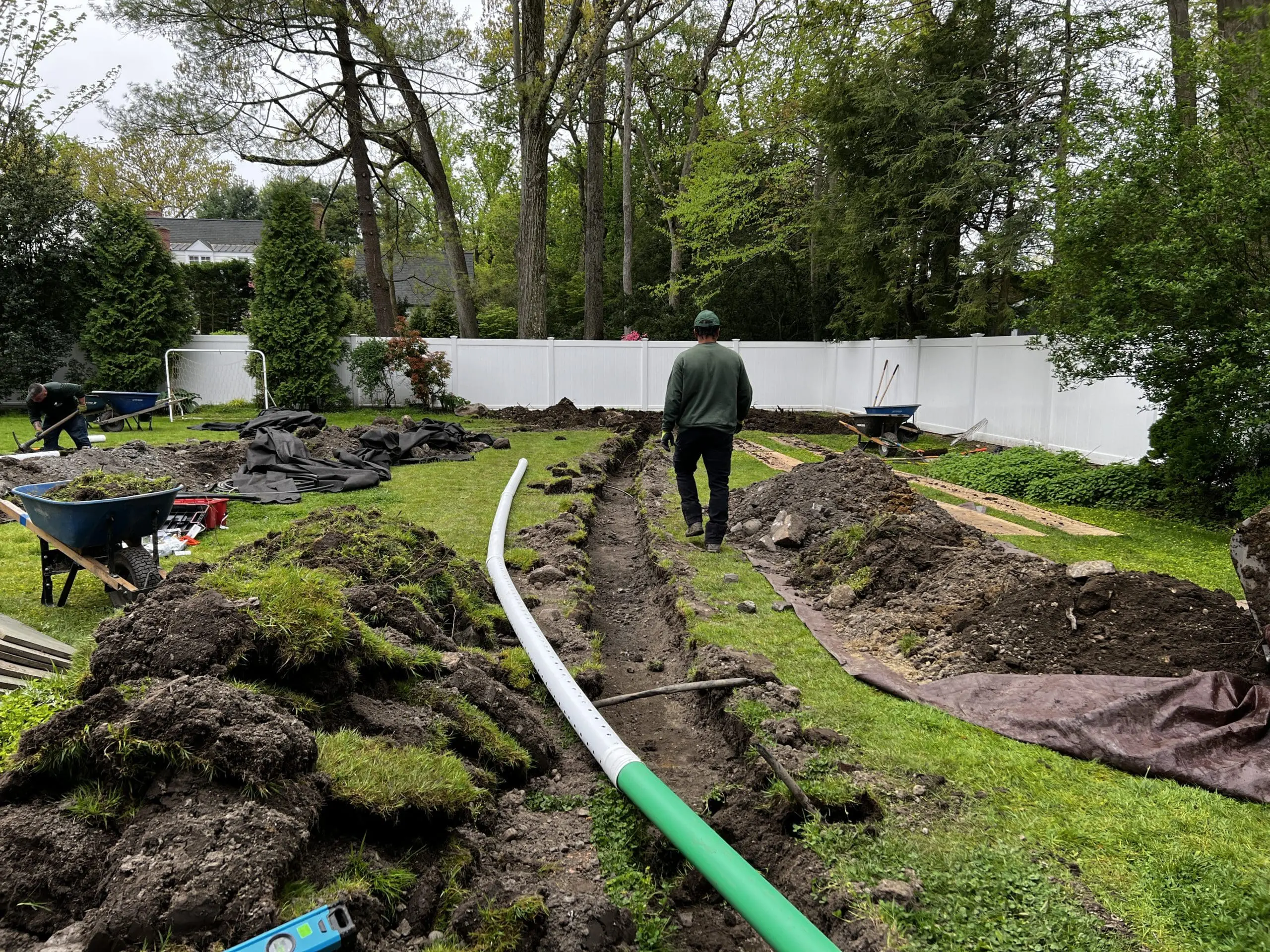
- Trench Drains with Vertical Infiltrators: Horizontal pipe drain that usually runs across a lawn (or zone prone to ponding) with vertical running from just below the surface to the horizontal pipe, with the whole system surrounded by gravel and filter fabric. The vertical infiltrators allow more access points to the horizontal drain for faster stormwater conductivity.
- Engineered Soil: soil specified for the job at hand. Typically we chose a soil with a higher mineral content and lower organic matter content for steep slope green infrastructure jobs. The high mineral content in the soil delays the overall decomposition. This allows the plants to become established in a consistent slope that is not degrading rapidly. We find many slope failures when people dump their organic matter waste repeatedly on the slope and it rapidly breaks down and collapses the slope.
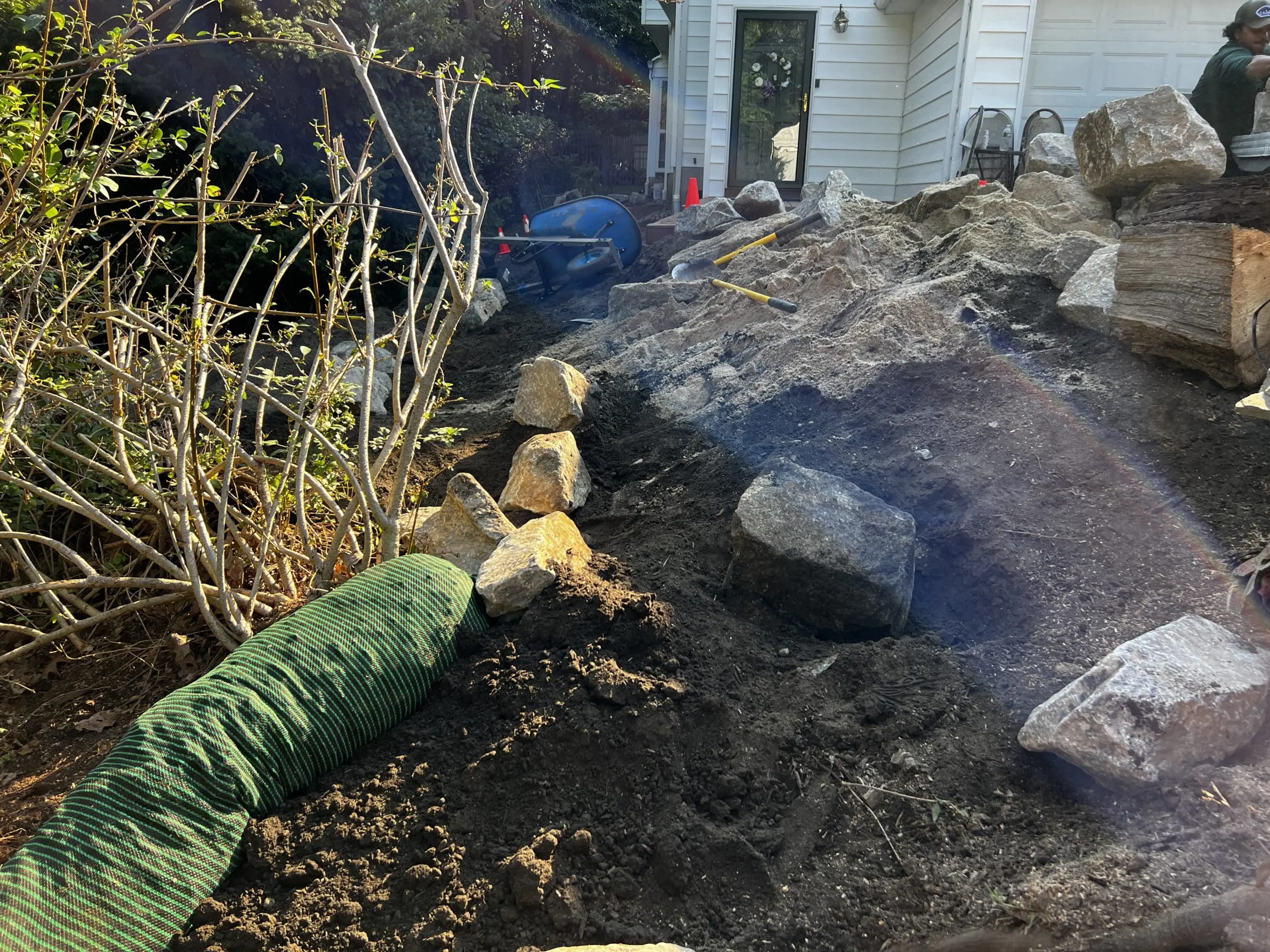
- Filtrexx SiltSoxx: Compostable, log-shaped barriers that are designed to catch silt and sediment as it travels through the landscape via stormwater. Siltsoxx are installed via stakes into the slope and then graded over with soil. They act like underground terraces to slow down stormwater and capture the debris and sediment it transports.
- Storm Chambers: Cultecs, Flowells: Underground stormwater holding chambers. For projects that require extensive mitigation for impervious space on the property, we direct stormwater to these underground chambers where they slowly leak out into the soil and recharge aquifers. Again, gravel and filter fabric surrounding the installation is essential, and actually expands the water holding capacity of the storm chamber. For example, a 50-gallon flo-well has a 50-gallon water holding capacity on its own, but when installed with one foot of gravel surrounding all sides, the capacity increases to 145 gallons.
Above Ground Strategies:

- Terracing: Constructed terraces of natural stone help to interrupt a slope and make it more gradual. These physical barriers help slow the flow of stormwater. Planting the terraces lets plant roots further secure the soil on the slope and helps recycle stormwater into the hydrologic cycle via evapotranspiration.
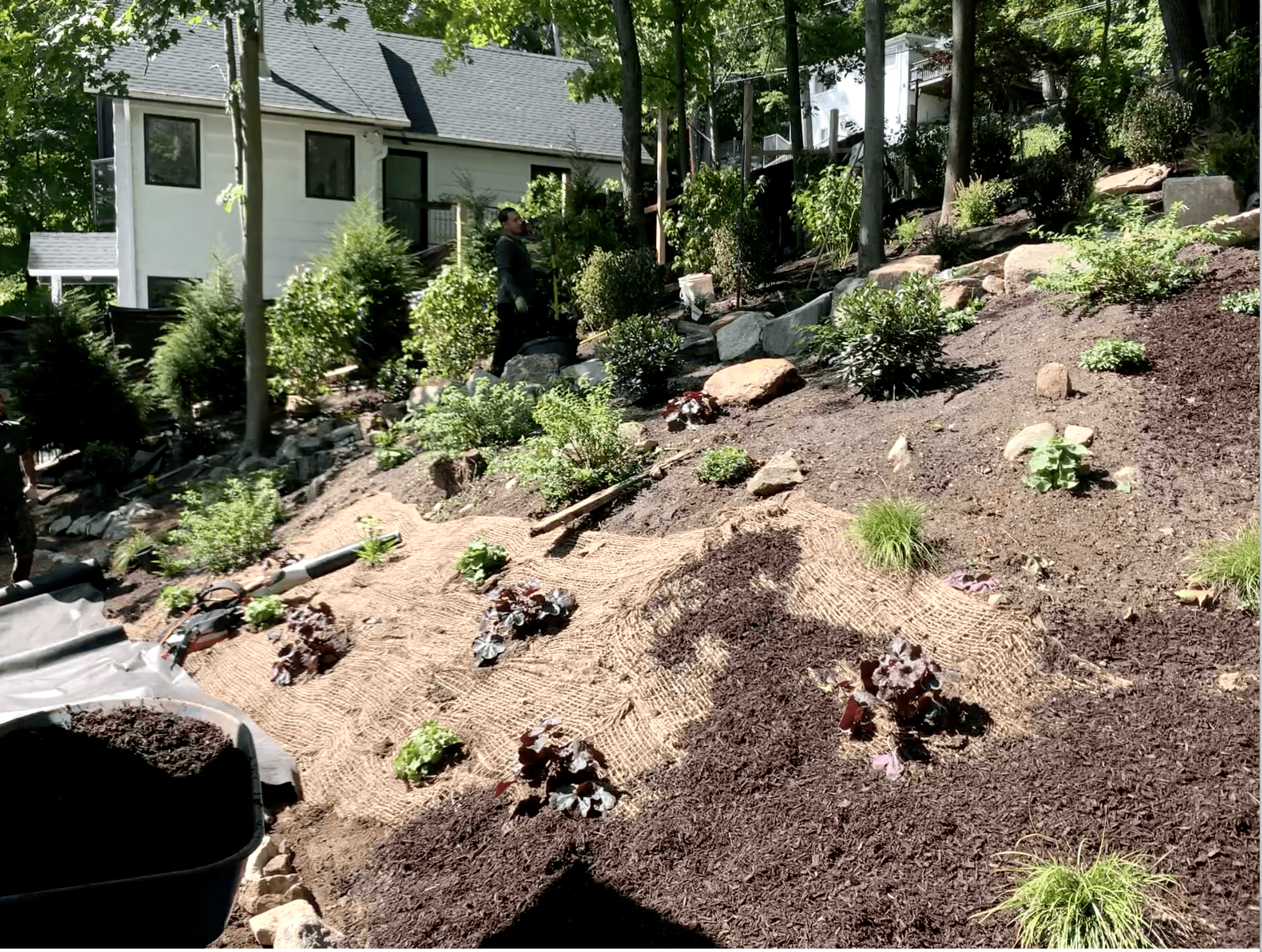
- Erosion Matting / Jutte Netting: Some slopes call for additional stability until plants become fully established. In these cases, we install erosion matting or jutte netting, and plant directly into it. If seeding, the netting does allow seed to germinate and emerge through it. The netting eventually biodegrades and by that time, the gardens are fully established and their deep roots help stabilize themselves and the slope during storm events.
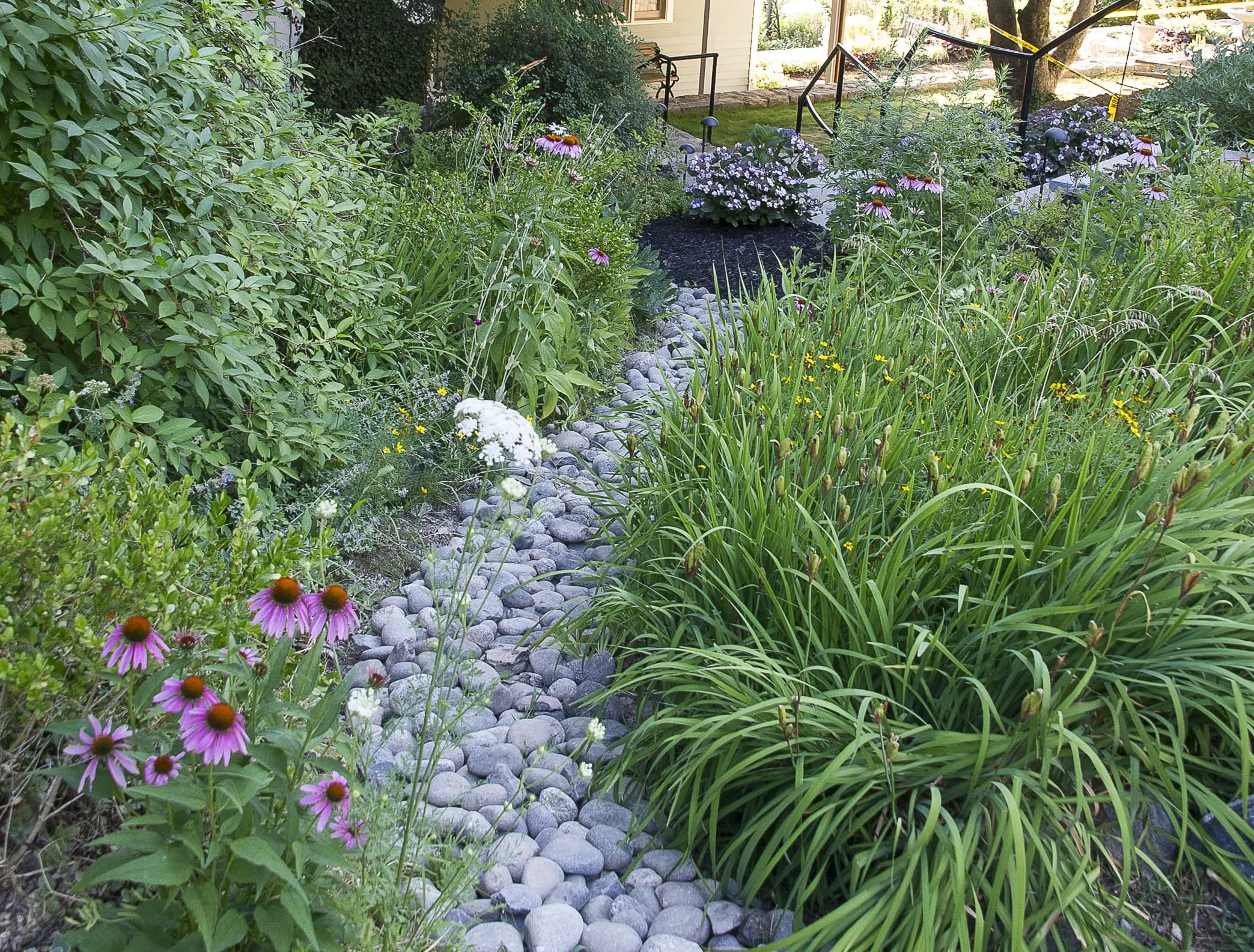
- Bioswales & Forebays: Bioswales are gravel and/or river rock channels that help direct stormwater through the landscape. They are often utilized to direct water away from desirable areas (ie. patios, swimming pools, tennis courts) and into landscape zones better suited to absorb the water. Sometimes we armor bioswales with alternating stone, which interrupts the flow and directs stormwater gradually out to the sides. Forebays are gravel-filled depressions that are great for collecting and evaporating stormwater.
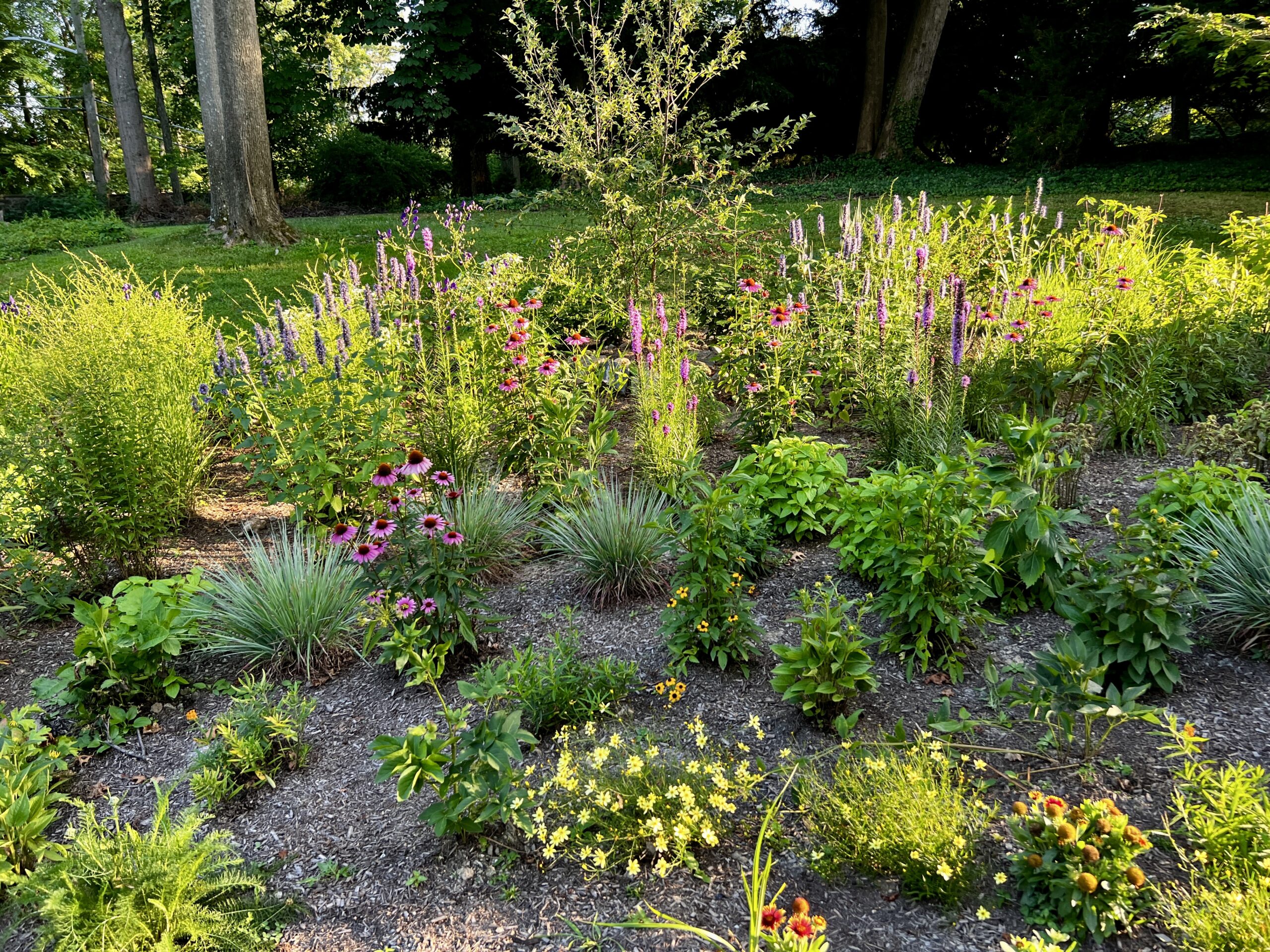
- Rain Gardens: the poster child for stormwater management! Rain Gardens are beautiful landscape features that are often excavated depressions filled with a well-draining soil mix. Rain Gardens are planted with native plants that can tolerate periods of flooding and drought. They collect stormwater and allow for both infiltration and evapotranspiration. For more information view our previous blogs: Rain Garden vs. Pollinator Garden [VIDEO]; Rain Garden Design in Westchester, NY; Rain Gardens Explained
- High-Absorption Trees: In very wet zones, we have started to deploy trees that grow fast and absorb a ton of stormwater in the process. Dawn Redwood, Bald Cypress and Willows are all great examples.
- Rainwater Harvesting: Collecting stormwater in rain barrels is a great practice to continue as both storms and droughts become more intense and less predictable. We connect rain barrels to perforated pipes to allow it to irrigate out into the landscape when needed.
For more information on applying these techniques, see Jay Archer’s article in Turf Magazine on Sustainable Stormwater Solutions, that follows three GJLD case studies on landscape drainage projects.
—
Green Jay Landscape Design
Where Design Meets Ecology
914.629.5240